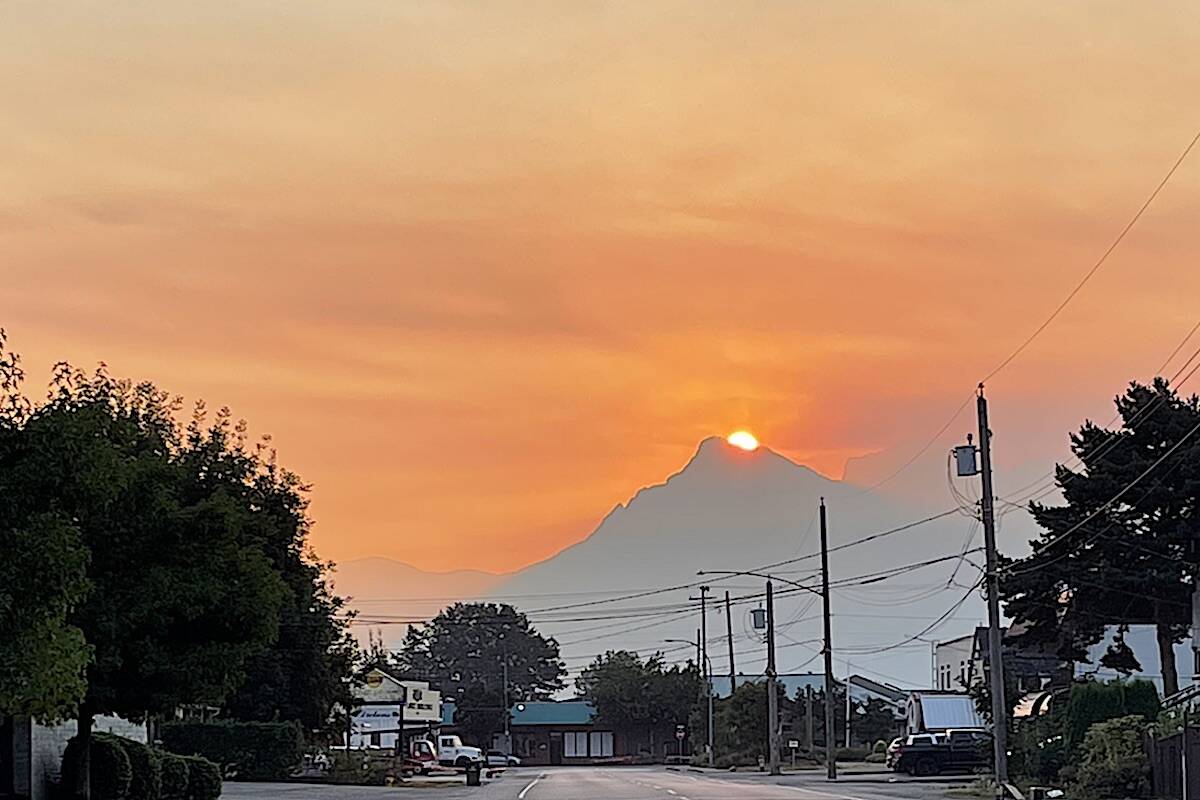Friday is looking like it will mark a milestone of 51 days of drought in sun-drenched Chilliwack.
However it it rains, as forecast earlier in the week by Environment Canada, it means the longest ever dry spell on record for Chilliwack, 51 days set in 1951, will be broken on Sept. 23.
If it doesn’t rain, it means the stage 4 drought level, that the Lower Mainland entered on Sept. 15, will continue.
There’s only been 6.8 millimetres of rain in more than two months, which is less than an inch of water, which fell in Chilliwack on Aug. 3, according to Roger Pannett, Chilliwack’s volunteer weather observer for Environment Canada.
With more warm weather still to come, Pannett expects the drought records to be exceeded.
“Also, with the present trace of precipitation, it’s on target to be the driest September since Chilliwack records commenced in 1879,” Pannett wrote on Sept. 16.
The Chilliwack Progress contacted retired UFV agriculture professor Tom Baumann, who now works as an agri-food consultant, to get his take on the impact the drought conditions might be having on the ag sector as a whole this past summer.
“This spring was incredibly wet and cool so most crops got delayed,” Baumann said.
Take sweet corn, which was late this year.
“Those that grew it were faced with having corn ripen too quickly when it finally got warm.”
But in the end those heavy rains were fortuitous.
“The spring saved our bacon many times over when perennial plants such as blueberries after long inundation with water were able to slowly recover their root systems and actually successfully recover.”
Without the cool, wet spring, farmers would have had an even tougher time.
“At the same time, weeds took over in some crops, we had crop failures in others, and even some trouble getting the bees to do their job.”
It may seem unrelated to the drought, but there was so much water in the ground from the wet spring that many crops did not suffer as much in 2022 as they did in 2021.
“Most of our annual crops this year are already off or are close to it, such as carrots and potatoes,” Baumann reported.
He credits the “incredible irrigation infrastructure” put in place in the wake of previous drought episodes, otherwise “we would not look as good as we do” heading into fall.
Consecutive B.C. governments put incentives in place that helped establish “water resiliency” for plantings, the former prof said.
Farm producers who switched to a “water-wise” irrigation system were offered an incentive.
“So while we watch California crops wither as they run out of useful irrigation sources and drinking water, we have managed our water more wisely and it is paying off right now.
“I do not want to minimize the efforts it takes to have all that infrastructure in place, and we most certainly see the effects of the prolonged drought in our forests. There is a cost to all this, and it is the farmers that pay for it.
“If you look at the average, our hot summers and cold winters, flooding and drought, over the year it balances, but it seems that weather is getting more extreme and we need to prepare ourselves not only for floods but also for droughts and with it the necessary irrigation.
About 30 years ago no one was ready for any of this.
“Today we have learned and in most situations, have an answer,” Baumann added. “Berries are all irrigated, so are most all other horticulture crops.”
He’s still worried about forage grass and cow corn, as not everyone can irrigate, and they’ll need to be vigilant with perennial crops as the effects of any water stress will show next year and sometimes even longer down the line.
“Overall, if we get a much longer dry period, agriculture will step up, but look at the street trees and those on the lower mountain slopes, they shouldn’t already have brown leaves. They are going to be weaker heading into winter,” he said.
“We anxiously watch this and hope to bring all our crops to market and be able to germinate winter cover crops.
“If we didn’t have that late spring with so much water, we’d be in trouble right now.
“But let’s hope for the best, that we get the right amount of rain in time, and not too much in November again.”
Curious about the driest Septembers in Chilliwack’s history?
There was 2012 when only 6.6 mm of rain fell, 1991 with 8.2 mm, and 1989 with only 8.2 mm of rain the whole month. Compare those Chilliwack totals to the average September rainfall, which is 112.7 mm, on 11 days.
Longest droughts on record for Chilliwack:
51-day drought, July 7 to Aug. 26 ,1951.
46-day drought, June 14 to July 29, 1985.
46-day drought, June 16 to July 31, 2021.
42-day drought, July 2 to Aug. 12, 1960.
41-day drought, July 8 to Aug. 17, 1990.
RELATED: Last year it finally rained in the Fraser Valley after 53 days
RELATED: Ongoing drought could cost Canada big
Do you have a story idea to share? Email:
jennifer.feinberg@theprogress.com
@CHWKjourno
Like us on Facebook and follow us on Twitter.

